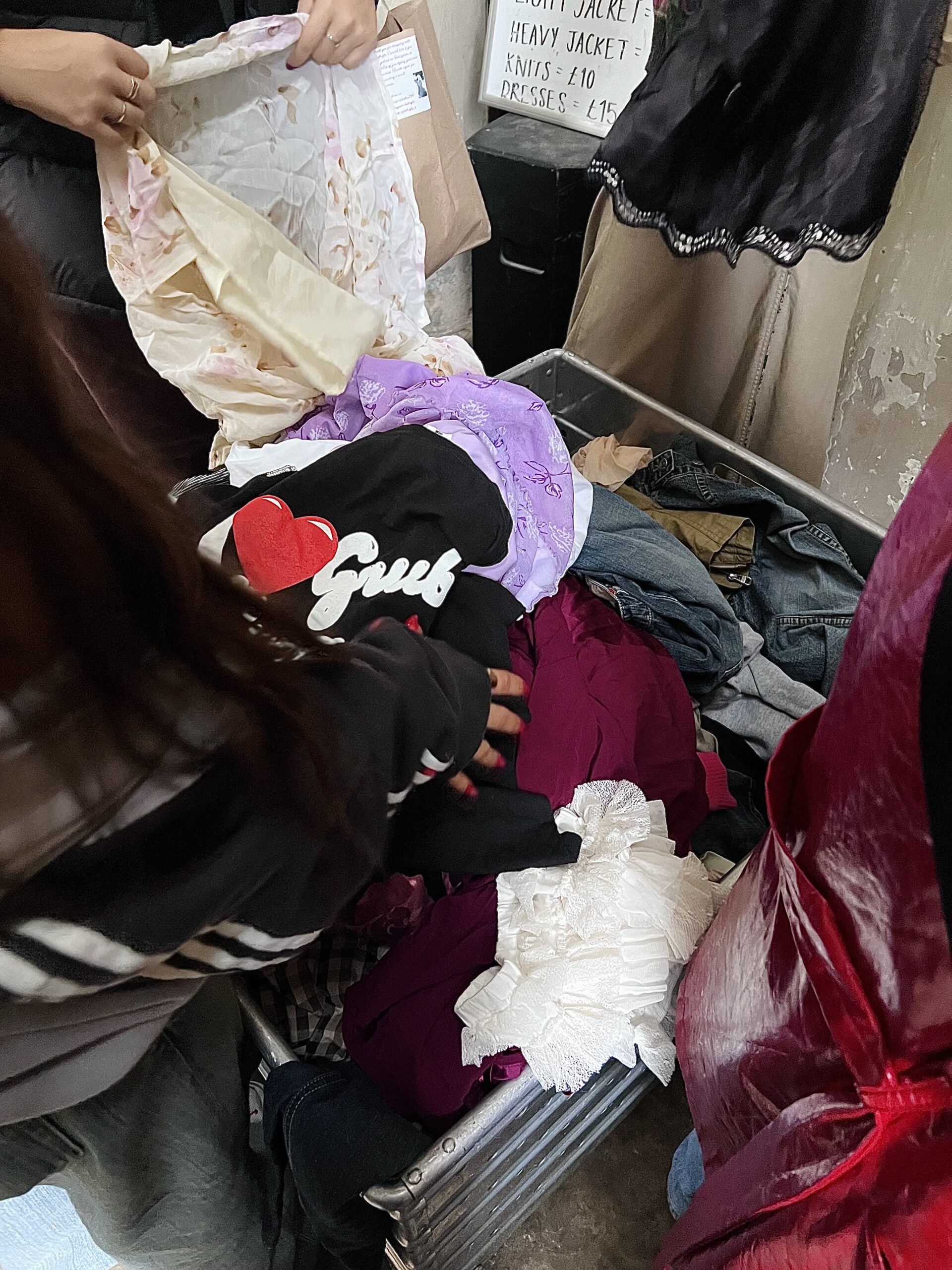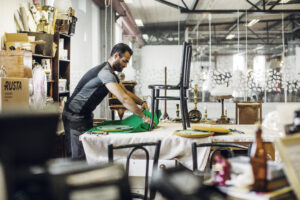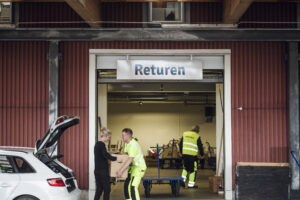A circular economy, is it really possible? This week we focused on the ongoing debate on the feasibility of implementing a circular economy on a global scale. It became clear to me during the discussions, that executing this successfully would be challenging given the necessity of having multi-sector collaboration to achieve a fully closed circle (Geissdoerfer et al, 2017). We concluded it would be more achievable to begin with local and small-scale circular initiatives as a way to start integrating these into an economic model.
A recent visit to a chaotic second-hand pop up market in London left me feeling exhausted and overwhelmed. There was a manic rush of people diving into various mountains of random one-off clothes attempting to be the first to grab whatever looked good. The experience lacked any attempt at shopping etiquette. Standing back from the melee, it was almost a comical sight. Purchasing from second-hand shops is not a new concept, however, as long our fast fashion and retailers continue to dominate the high street and online, our unsustainable shopping habits will unfortunately prevail.

I looked for some good examples of local circular initiatives that provided a better shopping experience and had a positive impact on local economies and communities. I found ‘ReTuna’, the world’s first recycling shopping mall in Eskilstuna, Sweden. The space looks like any normal, stylish and modern shopping mall, with all the usual amenities, however everything stocked by the individual retailers, from fashion to furniture, to the lounge areas and restaurants, follows the reuse, repair and redesign cycle. Locals can donate their unwanted items as well as purchasing newly up-cycled products, organised by category all in one place, creating a sustainable and circular ecosystem (ReTuna, 2015) The mall makes second hand shopping a pleasant and less time consuming experience compared to the disorganisation of flea markets (Hedegård, and Gustafsson, 2020).



It is not the sole responsibility of the individual retailers to collect, sort and upcycle used goods, it is down to the citizens of Eskilstuna to donate their reusable items and continue to purchase from the mall, keeping the cyclical network going. This is an example of community based circular collaboration in action. By developing successful smaller community-based initiatives first, this could act as circular catalysts for cities and encourage people to incorporate more circular living into their everyday lives. If national governments, local councils, and municipalities helped to fund initiatives such as this, the benefit to local economies, impact on waste reduction and positive effect on the environment would be significant and would help to promote a circular economic model worldwide (Hedegård, and Gustafsson, 2020).
References:
Geissdoerfer, M., Savaget, P., Bocken, N.M. and Hultink, E.J., 2017. The Circular Economy–A new sustainability paradigm?. Journal of cleaner production, 143, pp.757-768.
Hedegård, L. And Gustafsson, E., 2020. Chapter Thirteen The Fashion Waste-Management Process At Retuna: A Study Of Unstable Classifications. Perspectives On Waste From The Social Sciences And Humanities: Opening The Bin, P.236.
Retuna återbruksgalleria,. 2015. Retuna. Available at: https://www.retuna.se/ (Accessed: 05 November 2023).








Yulia Kovanova
13 November 2023 — 19:56
Great observation and an excellent example of community-based circular collaboration in action. Good use of images. Are they yours?